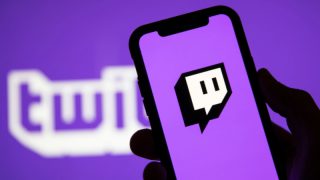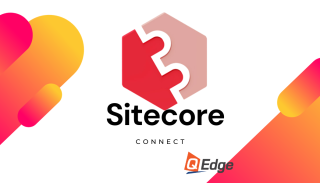For organizations trying to forge deep connections with customers and differentiate themselves from the competition, personalization is no longer simply a nice-to-have. 90% of clients now demand personalized service, and new technologies are enabling channels-wide hyper-personalized service. By utilizing cutting-edge AI skills and real-time data, customization will only get more accurate, predictive, and emotionally-driven by the year 2024. Brands have the chance to significantly alter the consumer journey if they use these technologies to provide memorable, personalized moments.
As technology evolves, so do the personalization tactics and capabilities available to connect with customers in more relevant, meaningful ways. QEdge has been paying attention to the progress of personalization. Here are 8 advanced personalization trends that are expected to shape customer experiences in 2024 and beyond.
1. AI-Driven Individualization
One of the most advanced personalization techniques involves using artificial intelligence (AI) and machine learning to create highly tailored, individualized experiences for each customer. This level of personalization goes beyond basic segmentation and even predictive analytics.
With the power of AI, brands can analyze data like purchase history, browsing behavior, and interactions to determine each customer’s specific preferences, interests, and values. Starbucks is one brand utilizing AI to deliver hyper-personalized product recommendations, offers, and content to customers through its mobile app.

In 2024, more brands are projected to leverage AI-driven individualization to deliver the right message, product, or experience at the individual level rather than broader segments. This one-to-one personalization creates stronger emotional connections with customers.
2. Augmented Reality Try-Ons
Virtual try-on capabilities using augmented reality (AR) technology is another growing personalization trend, especially in retail. AR try-ons allow customers to visually try on products like makeup, jewelry, watches, eyewear, and more using just their smartphone camera.
Brands like L’Oreal offer AR try-on apps that use facial mapping technology so customers can test out various makeup products like lipstick and eyeshadow. The ability to virtually “try before you buy” helps brands provide personalized shopping experiences that connect with customers on a deeper, more tangible level through AR.
3. Connected Device Experiences
With the growth of smart devices and Internet of Things (IoT) technology, brands can connect with customers in real-time through smartwatches, fitness trackers, smart TVs, and more. Personalized experiences can be delivered through connected devices based on factors like location, time of day, activity, and usage patterns.
For example, a fitness brand can use data from a customer’s smartwatch to offer personalized exercise recommendations and training content based on their workout history and fitness goals. The opportunities to provide hyper-personalized, in-the-moment experiences through connected devices are tremendous.
4. Predictive Content Curation
Advances in predictive analytics allow brands to determine the type of content — videos, blog posts, educational materials — that will resonate most with each customer. Brands are getting smarter at curating and recommending predictive content personalized to customers’ interests and engagement patterns.

Education platform MasterClass uses predictive content curation to provide members with personalized recommendations on which class – out of 100+ options – they should take next based on their viewing history and engagement. Predictive content curation allows brands to serve customers with personalized content designed to inform, educate, and engage.
5. Values-Based Personalization
Today’s customers expect brands to connect with them on a deeper, more emotional level by aligning with their values and beliefs. Values-based personalization involves using data like social media activity to determine customers’ stances on social causes and then crafting personalized experiences that resonate with those values.
Outdoor gear brand Patagonia drives values-based personalization through its environmental activism. Patagonia uses its website and mobile app to provide customers with personalized content and recommendations supporting green causes and sustainability based on their interests. This level of personalization helps build loyalty among its target audience.
6. Contextualized Experiences
Contextualized personalization looks at the overall context surrounding a customer’s interaction to deliver personalized experiences tailored to that moment in time and situation. Location, time of day, weather, current events, and browsing history are examples of contextual data points that can inform hyper-personalized experiences.
For example, if a customer is browsing a retailer’s website late at night, the brand could serve up personalized content and offers related to loungewear and sleepwear rather than office attire. Or a hotel could send a customized offer for an indoor dining credit if it’s raining during a customer’s stay. Context provides endless opportunities to connect through personalization.
7. Personalized Mobile Apps
Customers spend the majority of their digital time on mobile, so personalized mobile apps are a major opportunity. Retailers like Sephora and Nike allow users to customize their mobile apps by selecting topics and categories they are interested in to receive tailored content and product recommendations.
Location-based personalization through mobile apps is also popular, with Starbucks delivering customized offers and mobile ordering options based on customers’ proximity to certain stores. The ability to design completely customized mobile experiences based on personal preferences and real-time context is key.
8. Personalized Recommendation Engines

Finally, highly advanced recommendation engines utilize artificial intelligence and machine learning to deliver ultra-personalized product recommendations. Amazon's recommendation engine drives 35% of sales by analyzing purchase history and browsing behavior to determine which products a customer is most likely to purchase or engage with.
In 2024, more brands are expected to invest in this level of predictive, personalized recommendation technology to increase sales and engagement by delivering customized suggestions unique to each customer.
Conclusion
Customers are growing more sensitive about how their data is collected and used, even as new tools provide tremendous opportunities for deep personalization. To continue gaining consumer trust, brands must prioritize transparency, privacy, and permission. The personalization tactics that successfully balance providing customers with specialized experiences and preserving their interests will be the most effective. One thing is certain: brands risk slipping behind those who adopt more humanized, customer-centric interaction driven by data and AI if they don't advance customization to keep up with expanding consumer expectations. The present is now, and it is intimate.
Read More:







